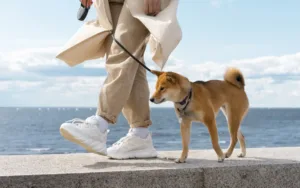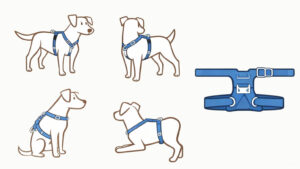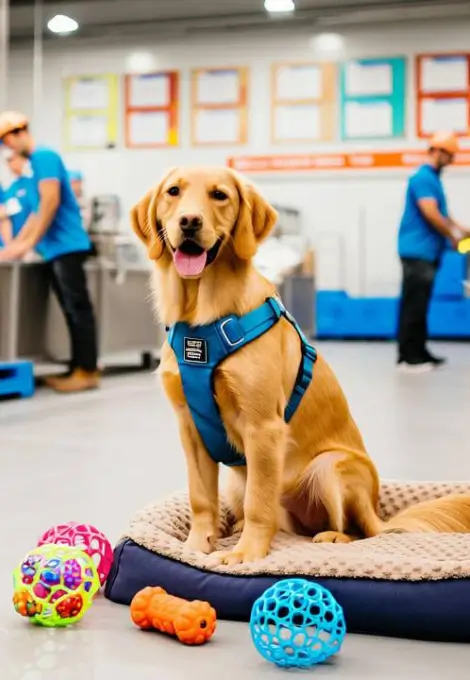How Can Chest Strap Manufacturers Innovate In Printing And Pattern Design?
What has inspired the innovation of prints and patterns on chest straps?
Today, with the booming pet economy, the harness has long transports its role as a functional product and has become an extended carrier of pet fashion and the owner’s attitude towards life. As a pet brand with its own factory, Wingtupet is well aware that the innovation of prints and patterns is not only a breakthrough in craftsmanship but also a strategic entry point to establish emotional resonance with consumers. This article will analyze the core driving forces that promote the innovation of chest and harness design and share the practical experience of Wingtupet.
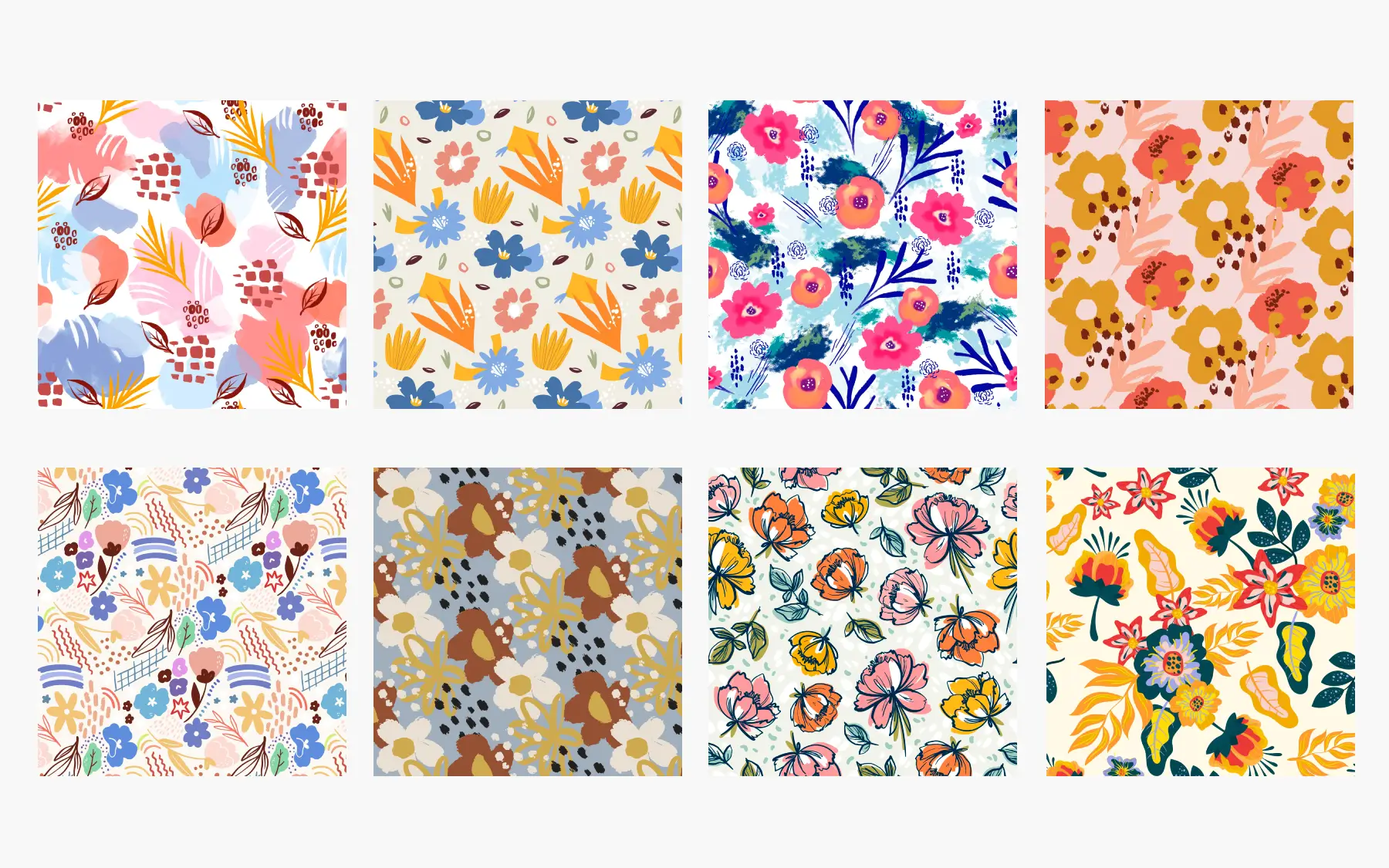
I. Innovation Driving Force: Three Core Elements
1. Upgrading of consumer demands
- Personalized customization: Gen Z pet owners regard their pets as family members, and the demand for customization such as “name embroidery” and “exclusive avatar printing” has increased dramatically. Wingtupet factory supports 24-hour small-batch (1-100 pieces) rapid production.
- Scene-based design: festival-limited editions (Christmas reindeer, Halloween pumpkins), outdoor functionality (reflective camouflage) have become the key to a hit on social media platforms. The search volume for “parent-child products” has increased by 230% annually.
- Cultural symbol infiltration: Collaborations between national trend totems and 2D ips have significant premium pricing power among the younger generation.
2. Innovation in production processes
- Digital direct printing (DTF) and thermal sublimation printing: High-precision gradient, multi-color complex pattern reproduction, color fastness ≥4 grade.
- 3D stereoscopic embossing: Combining TPU embossing, realistic paw prints and other tactile designs, it enhances the texture and recognition.
- Environmentally friendly water-based ink & sustainable fabric: Compliant with REACH standards of Europe and America, safe and resistant to bites; Recycled polyester, natural cotton and linen and other materials meet international environmental protection requirements.
3. Social media forces design iteration
- The “visual economy” of Tiktok and Instagram has emerged, and high-contrast fluorescent colors and gradient laser films have strong dissemination power in short videos.
- Through user image sharing interaction and data monitoring (shopping cart keywords, hot comment terms), a “hot catcher” model is formed to quickly identify the pain points of the next best-selling design.
Ii. The Innovative Methodology of Wingtupet
Data-driven “Hot Spot Catcher”
- Independent website behavior analysis (keywords for abandoned orders, feedback on best-selling styles) + Pantone Color of the Year + pet behavior big data (comparison of cats with low saturation and dogs with high saturation), accurately predict pattern trends.
Modular design system
- Break down the patterns into a “basic element library” (geometric lines, natural textures, cultural symbols), and quickly combine them through algorithms or manually.
- The “replaceable Velcro panel” mechanism enables users to change the shape by themselves for a minimum of $1.65, achieving low-cost diversification.
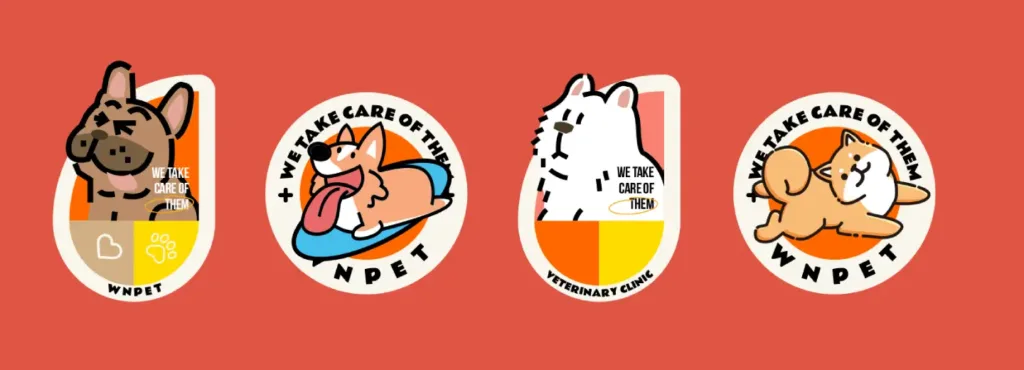
Cross-border collaboration and emotional co-creation
- This limited edition collaboration with an independent illustrator and a stray animal protection organization features a portion of the proceeds donated to public welfare, enhancing the brand’s warmth and buzz.
- Solution: She opted for the quick-release, antimicrobial lining harness with bold reflective piping.
- User co-creation platform: Fan submissions, voting, top 10 works participate in revenue sharing, deeply bound to the community.
Iii. Review of Typical Cases
“Forest Spirit” Eco-friendly Series: Recycled polyester + thermal sublimation printing, redwood forest branches and leaves gradually change green and blue, still bright after 50 washes.
“Urban Night Run” Reflective Series: Black and gray base + high-gloss reflective stripes, inspired by urban neon lights, balancing night travel safety and a sense of trendiness.
“Japanese-style Ukiyo-e” collaboration: In collaboration with renowned illustrators, limited to 200 pieces, with custom packaging and thank-you cards, sold out instantly within the community.
Iv. Future Trends: From Visual to Emotional Technology
AR Interactive printing
- Scan the code to trigger virtual pet costumes or animations, enhancing the fun of social sharing.
Biosensing printing
- The temperature-sensitive color-changing material can provide real-time alerts to the changes in a pet’s body temperature, enabling early detection of health issues.
Interactive optical fiber
- Dynamic flashing, changing with the rhythm of movement, balancing safety and a cool experience.
AI deep customization
- The combination of big data and generative AI enables personalized matching for each individual, precisely matching different pet breeds, personalities, and owners’ digital preferences.
In today’s increasingly homogenized pet product market, printing and pattern design have become the key for chest and harness brands to break through. Relying on its own factory advantages, Wingtupet has been making efforts in multiple dimensions such as technology, materials, creativity and user co-creation, constantly setting new industry standards. In the future, with the deep integration of technology and art, the pattern world of pet chests and harnesses will become more colorful, interactive and imaginative. We look forward to exploring the next “blossoming years” of pet fashion together with Wingtupet.
FAQ
Q: What are the differences between digital direct printing (DTF) and thermal sublimation printing? Which patterns is it applicable to?
A: DTF (Digital Direct Printing) is suitable for printing complex colors, gradient patterns and local high saturation, with clear and three-dimensional patterns. Thermal sublimation is suitable for full coverage printing, with more lasting colors and higher washability. It is particularly suitable for polyester fabrics. Wingtupet flexibly selects processes based on different pattern effects to ensure the best visual presentation.
Q: What is a “replaceable Velcro panel”? What are the advantages?
A: The “Replaceable Velcro panel” is a modular design structure. Users can freely replace panels with different patterns, with a minimum cost of only $1.65 per panel. It significantly reduces the cost of personalized customization, allowing users to easily match their pets’ daily looks. It is one of the most popular functional innovations in the market.
Q: How does Wingtupet determine which pattern will become a “bestseller”?
A: Wingtupet uses data from independent sites (such as keywords of abandoned orders and hot review words), big data on pet behavior (such as color preferences), and trend color trends (Pantone Color of the Year), combined with feedback from social platforms, to build A “hot catcher” model to accurately predict the next popular pattern direction.
Q: Can the series in collaboration with illustrators or public welfare organizations be customized?
A: Due to copyright and public welfare attributes, collaborative series are usually released in limited quantities. However, Wingtupet offers customized solutions and can jointly develop exclusive patterns with customers that have a story, while retaining the original warmth and brand emotion. It is suitable for scenarios such as brand customization and gift development.
Q: What are some low-key patterns recommended for cats or small dogs?
A: According to behavioral big data analysis, cats prefer low saturation and soft colors. It is recommended to choose natural gradient patterns or simple geometric elements like the “Forest Fairy” series. At the same time, you can also select styles with skin-friendly cotton and linen materials and non-toxic water-based ink, which are both beautiful and safe.

